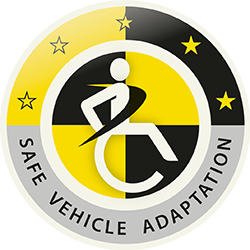 BraunAbility Safety Centres
BraunAbility Safety Centres
To remain in the front line among producers of safe and reliable vehicle adaptation products we have invested in multiple in-house test facilities. Here our products must pass various tests before being released onto the market. Dynamic crash tests, static pull tests, climate tests, vibration tests, and cycle tests are examples of tests that we perform at our BraunAbility Safety Centres.
For the tests we don’t perform in-house we team up with a number of accredited test houses for specific and general testing, these include:
Where applicable our products are independently witnessed and reported on by approval authorities such as VCA, UTAC, RDW, TÜV depending on the test parameters and other local requirements which may vary from country to country.